As if the amount of available technology wasn’t enough, component and smartphone makers’ marketing departments are using increasingly exaggerated names like “Super Retina XDR” and “Dynamic AMOLED 2x,” which only add to the confusion among us consumers.
Summary:
Two basic panel types: LCD and OLED (for now)
In summary, there are two types of smartphone screen technologies on the market: LCD and OLED. Each of them has several variants and generations, which has given rise to other acronyms such as TV and its different ranges, such as LED, QLED and Mini LED, which are actually variations of the technology. LCD.
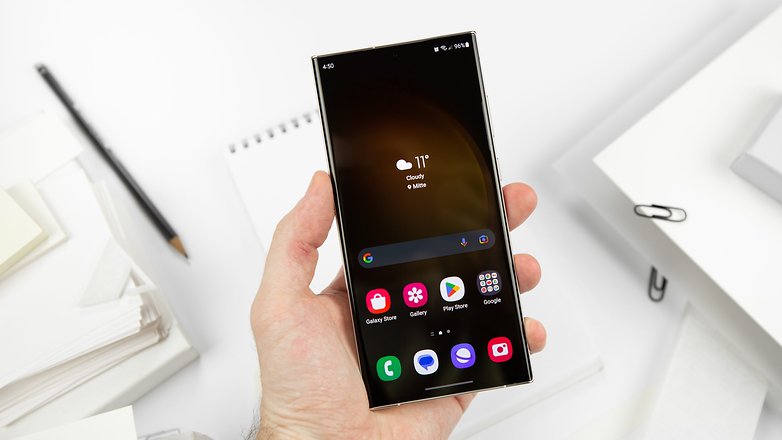
OLED screens (Galaxy S23 Ultra above) have taken over the premium and mid-range smartphone market. /next pit
LCD screen
LCD Monitor The full name Liquid Crystal Display, as the name implies, refers to the liquid crystal array illuminated by the backlight. Their ubiquity and relatively low cost make them a popular choice for smartphones and many other devices.
modern lcd screen by layer thin film transistor (Thin Film Transistor), with an active matrix that saves cost and complexity over older low-res passive displays, such as those commonly found in calculators, old watches, and even LA’s (yes) original Game Boy.
On a TFT display, each pixel does not need a dedicated connection to receive the voltage needed to turn it on or off, and tiny transistors control the current that each row and column of pixels receives.
In general, LCD monitors tend to perform well in direct sunlight because the entire screen is lit from behind, but their color representation may be less accurate than monitors that don’t require a backlight.
LCD or LED? What is the right choice?
Regarding backlighting, the above question became very common after the introduction of “LED” TVs, and the short answer is LCD.technology used in the screen led (Light Emitting Diodes) are always liquid crystal, the difference is that it is the LED that produces the backlight.
LEDs have the advantage of being extremely low energy consumption, which explains the importance marketing departments highlight in TVs, but not so much in smartphones with smaller screens.
On the other hand, backlight operation prevents LCD/LED screens from providing competitive contrast ratios with OLED screens, because lighting control is not performed by each individual pixel, but by areas of the screen.
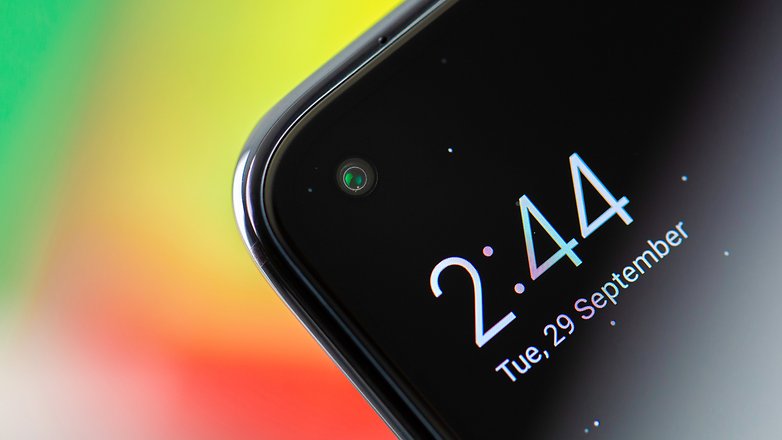
The 144 Hz display of the Mi 10T Pro is still one of the most advanced LCD/LED screens available. / © kwgeek
IPS/PLS panel
technology IPS (in-plane switching) solves a problem encountered with the first generation of TFT LCD screens with TN (Twisted Nematic) technology: color distortion when viewing the screen from the side – a phenomenon that persists on smartphones and cheap tablets.
In an IPS screen, the liquid crystals are aligned with the screen to provide excellent viewing angles, typically 178º on TVs. Another characteristic of IPS panels over other LCD technologies is their excellent color reproduction, which explains their use in monitors used for image editing work.
IPS monitors are usually associated with LG, although they were invented by Hitachi.So Samsung Display created a very similar technology called ask for help (Plane to Line Switching). Samsung claims its technology offers higher brightness levels and better viewing angles, but in the end the two technologies generally offer the same characteristics.
Mini LED: The new thing in town
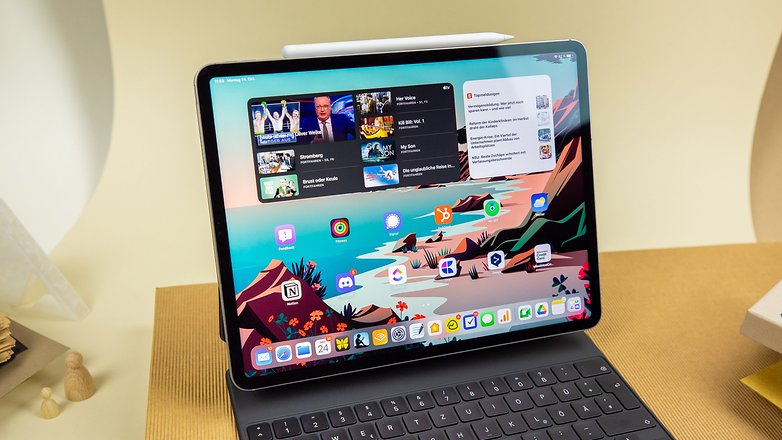
Apple’s flagship tablet, the 12.9-inch iPad Pro (2022), features a Mini LED display. /next pit
Touted as the next big thing in 2021, Mini LED Originally intended for TVs, it quickly made its way to mobile devices with Apple’s 12.9-inch iPad Pro (2021). Despite the marketing hype, Mini LED displays are basically LCD panels with more LEDs added to the backlight.
This allows for better control over contrast levels in different areas of the screen, with more backlit sections of the screen. Another benefit Apple is touting for the new iPads is higher peak brightness — up to 1,600 nits in HDR mode, up from 600 nits in the previous generation.
Despite the increased contrast (and potentially brightness) compared to traditional LCD/LED screens, mini LEDs still divide the screen into multiple brightness zones — over 2500 zones in iPads and some of LG’s “QNED” TVs — versus just a few dozen or hundreds of areas In previous-generation FALD (Full Array Local Dimming) displays, the LEDs were located behind the LCD panel, rather than at the edge.
However, for greater contrast control at each point of the screen individually, it will be necessary to switch to panels equipped with microLED technology – the cost of which remains prohibitive in 2021 – or OLED.
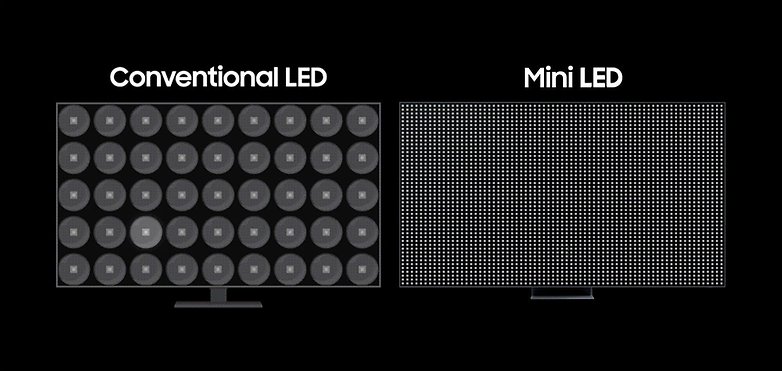
The mini-LED backlight (right) has more dimming zones, resulting in better contrast. / © Samsung
OLED screen
organic light emitting diode Stands for Organic Light Emitting Diode. OLED displays are made of thin sheets of electroluminescent material that, as the name suggests, emit light when electricity passes through them. Unlike backlit LCD panels, OLED screens are “always off” unless individual pixels have power.
This means OLED screens have purer blacks and use less power to display black or darker colors on the screen. However, a lighter color theme on an OLED screen consumes significantly more power than an LCD screen using the same theme. OLED screens are also more expensive to produce than LCD screens.
Because the black pixels are “turned off” in OLED screens, the contrast ratio is also higher than in LCD screens. OLED displays can also have very fast refresh rates, but on the downside, they’re not as visible in direct sunlight as backlit LCDs. Screen aging and diode degradation (since they are organic) are other considerations.
On the plus side, OLED screens can be thinner than LCD screens (since they don’t require a backlight layer) and can also be made flexible.
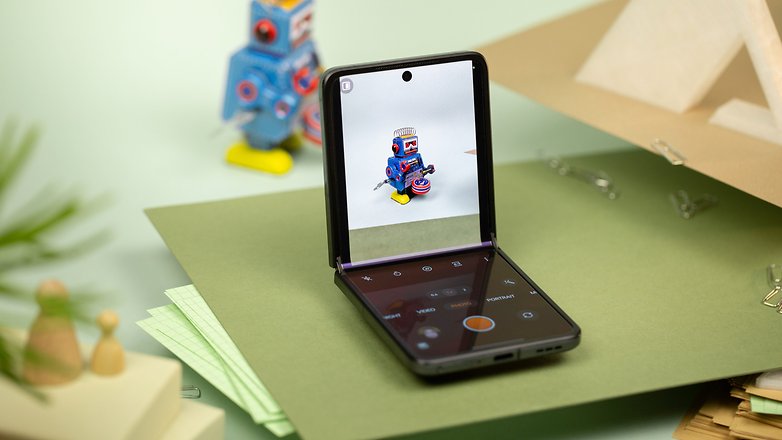
OLED’s flexible nature can be seen in foldable devices like the Oppo Find N2 Flip. / © kwgeek
organic light emitting diode
I’organic light emitting diode (Active Matrix OLED) uses a TFT layer like in an LCD to control individual pixels, as opposed to PMOLED (Passive Matrix OLED), which controls the display at the row and row level. The result is similar to LCDs, resulting in denser and larger screens. Generally speaking, all OLED screens released today are variants of AMOLED technology.
The screen of the future: microLED
Smartphones and smartwatches are rumored to soon consider integrating the technology micro light emitting diode in their device. This technology is distinct from LCD/LED screens because it has image characteristics similar to OLED.
Each subpixel on a MicroLED display screen has a light-emitting diode, usually a set of red, green and blue diodes per dot. It has the potential to use inorganic materials such as gallium nitride (GaN).
By using self-illuminating technology, microLED displays do not require the use of a backlight, and each pixel is “turned off” individually. The result is impressive: your eyes see the same contrast as an OLED screen without the risk of image retention or organic diode burn-in.
Another benefit of microLED technology is the ability to display images at higher brightness while benefiting from lower power consumption, combining the advantages of OLED and LCD panels.
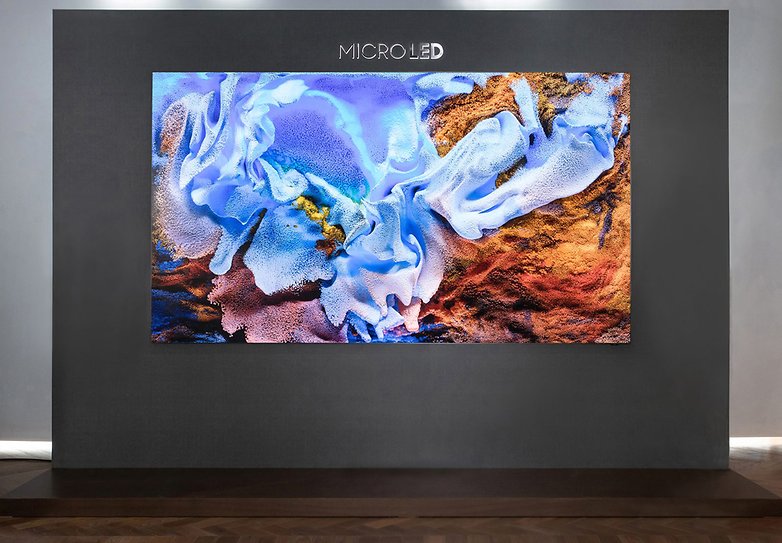
Technology cost and miniaturization of the diodes remain major challenges for microLEDs. / © Samsung Electronics
On the other hand, the use of multiple diodes per pixel poses challenges to component miniaturization. For example, Full HD resolution is just over 2 megapixels (1920 x 1080 dots), which requires 6 million tiny diodes using traditional RGB (red, green, blue) structures.
This is one of the reasons why adoption of the technology has remained very limited so far. You’ll only see them on big 75- to 150-inch screens that support 4K resolution (3840 x 2160 resolution, or nearly 8.3 million pixels or 24.8 million RGB subpixels).
POLED, Dynamic AMOLED, Fluid AMOLED, Super Retina, etc…
Despite half a dozen screen suppliers and a limited number of technologies, the marketing departments of smartphone brands try to outdo each other each release season by inventing more and more creative terms to entice customers — because they (big bucks) ) paid the price – this translates to a lot of extra naming on the spec sheet:
- polarization: Contrary to the case of IPS technology, OLED for smartphones is usually associated with Samsung Display, which popularized the technology through its use on the Galaxy S series – although OLED debuted earlier in the Benq-Siemens S88 . Like Samsung’s PLS panels, LG Displays also…












